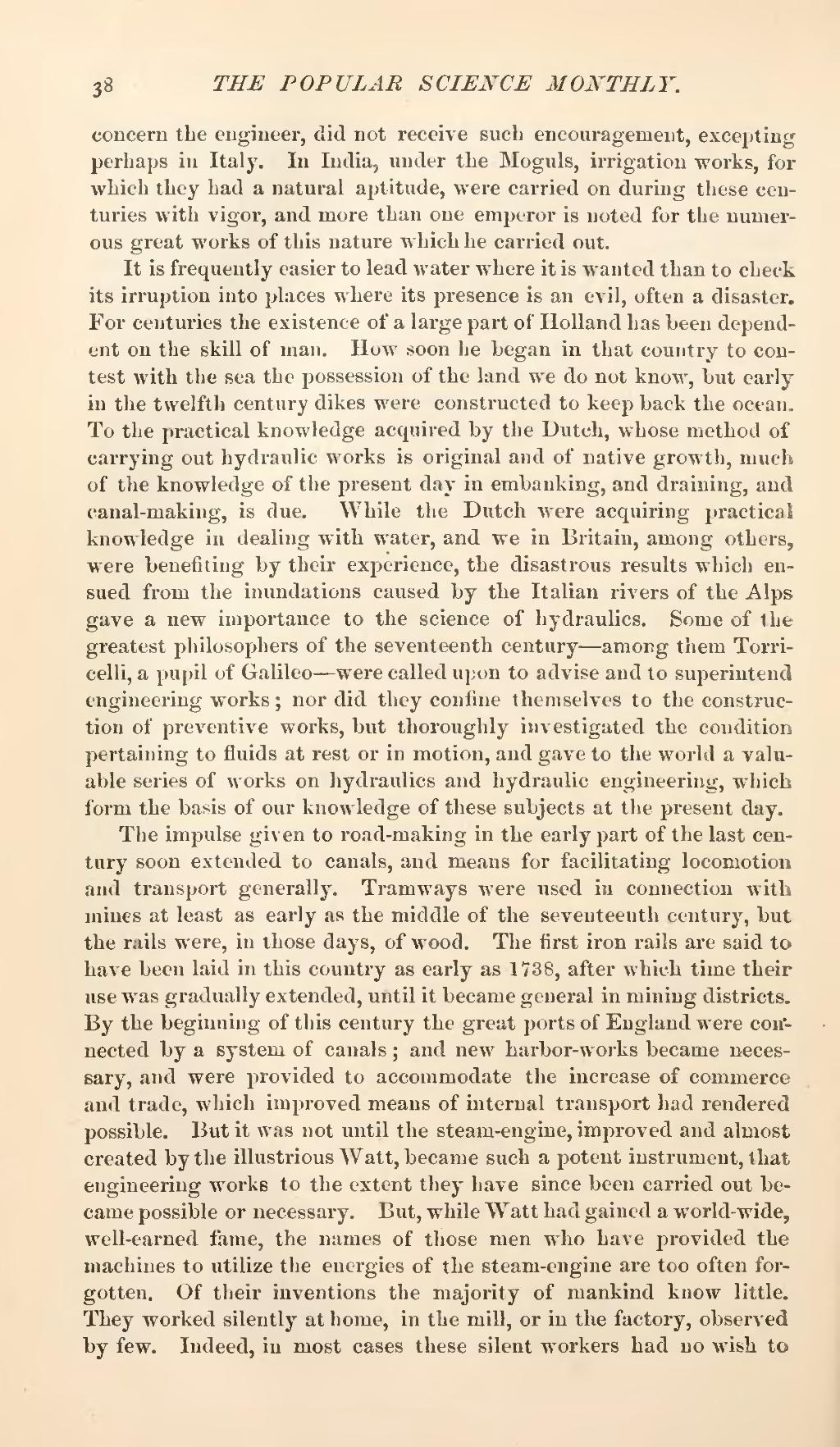concern the engineer, did not receive such encouragement, excepting perhaps in Italy. In India, under the Moguls, irrigation works, for which they had a natural aptitude, were carried on during these centuries with vigor, and more than one emperor is noted for the numerous great works of this nature which he carried out.
It is frequently easier to lead water where it is wanted than to check its irruption into places where its presence is an evil, often a disaster. For centuries the existence of a large part of Holland has been dependent on the skill of man. How soon he began in that country to contest with the sea the possession of the land we do not know, but early in the twelfth century dikes were constructed to keep back the ocean. To the practical knowledge acquired by the Dutch, whose method of carrying out hydraulic works is original and of native growth, much of the knowledge of the present day in embanking, and draining, and canal-making, is due. While the Dutch were acquiring practical knowledge in dealing with water, and we in Britain, among others, were benefiting by their experience, the disastrous results which ensued from the inundations caused by the Italian rivers of the Alps gave a new importance to the science of hydraulics. Some of the greatest philosophers of the seventeenth century—among them Torricelli, a pupil of Galileo—were called upon to advise and to superintend engineering works; nor did they confine themselves to the construction of preventive works, but thoroughly investigated the condition pertaining to fluids at rest or in motion, and gave to the world a valuable series of works on hydraulics and hydraulic engineering, which form the basis of our knowledge of these subjects at the present day.
The impulse given to road-making in the early part of the last century soon extended to canals, and means for facilitating locomotion and transport generally. Tramways were used in connection with mines at least as early as the middle of the seventeenth century, but the rails were, in those days, of wood. The first iron rails are said to have been laid in this country as early as 1738, after which time their use was gradually extended, until it became general in mining districts. By the beginning of this century the great ports of England were connected by a system of canals; and new harbor-works became necessary, and were provided to accommodate the increase of commerce and trade, which improved means of internal transport had rendered possible. But it was not until the steam-engine, improved and almost created by the illustrious Watt, became such a potent instrument, that engineering works to the extent they have since been carried out became possible or necessary. But, while Watt had gained a world-wide, well-earned fame, the names of those men who have provided the machines to utilize the energies of the steam-engine are too often forgotten. Of their inventions the majority of mankind know little. They worked silently at home, in the mill, or in the factory, observed by few. Indeed, in most cases these silent workers had no wish to
